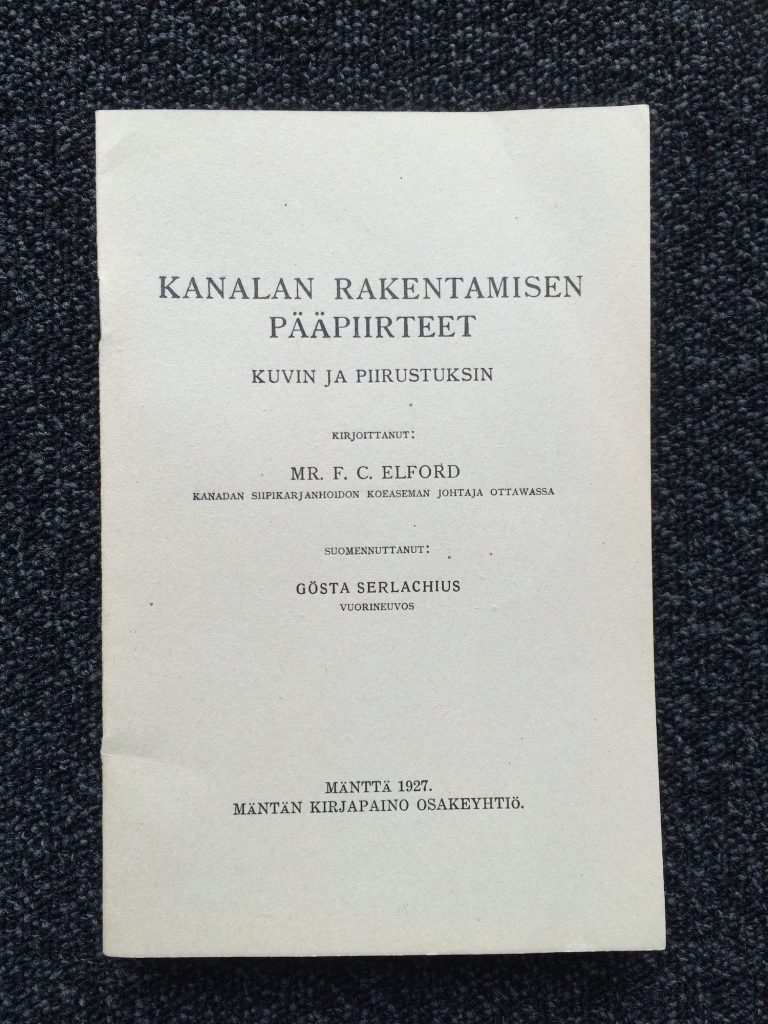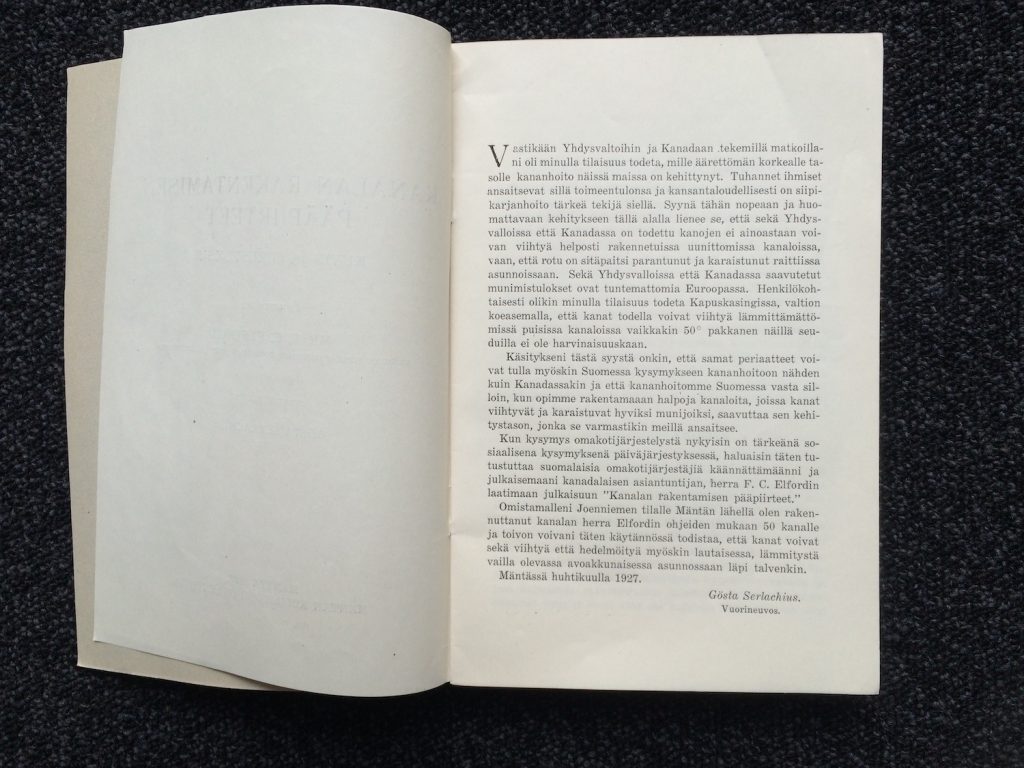Main principles of building a chicken house presented in pictures and drawings
In the 1920s Gösta Serlachius wanted to modernise Finnish chicken rearing in the spirit of Canadian example. The medium of modernisation was a booklet that Serlachius sent out for translation into Finnish. This rare publication belongs to the library of the Serlachius Museums.
During his North American trip in 1926, Gösta Serlachius studied the local poultry-raising practises. His purpose was to modernise the Finnish ones. He was a man who could appreciate efficiency. Thereforethe unheated chicken houses typical in Canada inspired him. As an introduction to their construction, a Canadian expert F. C. Elford had written a booklet that Gösta Serlachius delved. Right away he took to his heart to have the booklet translated into Finnish. Otava publication company in Finland expressed its interest to publish the book. Otava had already published in Finland the ”most popular and widest spread” textbook of raising poultry. Matti Ilkka, secretary of the Finnish Poultry farmers’ association, had compiled the booklet.
Matti Ilkka however, was not convinced by the theories of Elford. He regarded the lack of heating a particular problem. It could decrease the production as well as increase the consumption of feed. According to Ilkka, the book could be published, if the cold chicken house was left out ”unless one can present some kind of specimen that proves its applicability in our conditions”. Despite the fact that Otava changed its track due to this statement and regarded the publication of the booklet pointless, Gösta Serlachius was convinced of the excellence of the cold chicken house. He wrote to poultry farmer Erkki Tiitola on 17 March 1927: ” If publishing companies will not take on the responsibility, I can do it, for I have faith in this. – – Every pioneer will face opposition, but one must not despair.”
In the end, Mäntän kirjapaino publishing company published Kanalan rakentamisen pääpiirteet kuvin ja piirustuksin (Main priciples of building a chicken house presented in pictures and drawings) in 1927. Gösta Serlachius committed to reimburse the half of the financial loss if the company should sustain one. The company aimed to pay from the profit the remuneration of Gösta Serlachius’ expenses incurred from translation. Gösta Serlachius committed to help in any way possible to distribute the publication. The aim was to have the book ready for sale at general livestock exhibition in Lahti, held on 23–26 June 1927. The price of the book was 10 Finnish Marks.
Gösta Serlachius himself build a cold chicken house based on the Canadian theories at his Joenniemi farm. After his trip to North America, he had in 1926 commissioned architect W. G. Palmqvist to design a chicken house according to the example of Elford’s chicken house. This would however be twice as big. Moreover, its visual appearance would suit to other buildings in Joenniemi. In the size of 5 x 5 metres, the chicken house held 50 chicken. Palmqvist’s designs ended up as illustration for the guide book. Beside the poultry of Finnish origin acquired by Serlachius, the chicken house held also six white Leghorn poussins and four coquelets hand-picked by Elford. Cold chicken house turned out to be functional: both the chicken of Finnish origin as well as the imported ones thrived and laid eggs actively also during the cold season. As a result, the good experiences of the use convinced Gösta Serlachius to promote even more eagerly for the innovation he introduced to the country.
The cold chicken house still stands on the Serlachius Museum Gösta’s yard. After a long time, it has been reintroduced to its original use in summer 2015.
Milla Sinivuori-Hakanen
Curator



